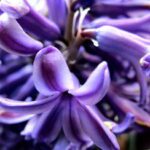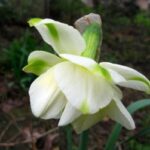lunaria
Speaking of plants for shade, this one kind of is, if you want to call shade the sunlight dappled through a rare tree canopy. Honesty is a biennial plant, but much like the long lasting hollyhocks, it reseeds enough to maintain its presence in the same spot for many years.
I never planted this flower in full sun, so I don’t know how it would behave there, but it performs reliably in part shade and on the north side of the garden. This one is white, but the plant comes in white and purple, like most wild flowers do.
Honesty is a native of the Balkans, a relative of broccoli, if you can believe it. It even tastes a little like mustard, but don’t try this at home, even though it is my understanding that the plant is not toxic.
The lore about Lunaria is that it brings luck and prosperity, and if you’re the superstitious kind, that would be reason enough to keep it around. I have a special fondness for it because it reminds me of my childhood and my grandfather’s garden.
It is not a dainty plant and will take over an area, hovering above low growth with complete disregard for proportions and garden design, and its plebeian foliage looks like a broad leaved weed until it starts blooming. The flowers are slightly fragrant and pretty enough, but the main attraction comes later in the year, when honesty starts popping its trademark shimmery translucent seed pods, a decorator’s favorite and the inspiration for its name.
Honesty seed pods are little cellophane rounds, inside which a few seeds are displayed, suspended in the middle, it is one of those wonderful plants that create texture in the garden at the end of summer, to counterpoint the fluffy panaches of the pampas grasses.
Did I mention it also brings luck?




 Previous Post
Previous Post Next Post
Next Post




